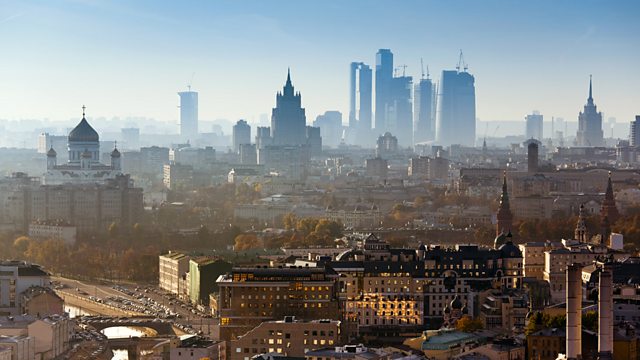
Moscow - The New Capital
Freed from the Mongols, power shifts to Moscow. Martin Sixsmith looks at its significance under Ivan the First as it emerges as the third Rome: a bastion between East and West.
In 1453, the Fall of Constantinople and destruction of the Christian Byzantine Empire by the Turks left Russia the sole remaining leader of the Orthodox faith. Directly exposed to the expanding empire of Islam it was a time of immense fear but also of opportunity, and Moscow used the crisis to further its claim to religious and political supremacy.
A mystical prophetic text, known as The Legend of the White Cowl, began to circulate, claiming to consecrate Moscow as the Third Rome, the true guardian of God's rule and causing great excitement among the population. Martin Sixsmith suggests the prophecy was in fact a forgery created for political purposes.
Moscow had begun to emerge a century earlier under the canny Ivan Kalita or Ivan Moneybags, whose wheeling and dealing carved out a rich and powerful place for his city and himself. He persuaded the Mongols to name him Grand Prince and pre-eminent ruler of the Russian lands. The word 'Tsar' was created by his heirs, derived from 'Caesar', and 'Sovereign of all the Russias.'
But the departure of the Mongols had left a power vacuum, and there were three contenders vying to fill it: Lithuania, Poland and the northern city of Novgorod, which had avoided direct Mongol occupation, and preserved the old quasi-democratic values of Kievan Rus.
Moscow needed to deal with each of them, and it did so slowly, creating a fragile national unity under Ivan III's unbending autocracy. It gave him the strength he needed to embark on an unparalleled campaign of territorial expansion, initiating the relentless empire building that would continue unabated to the twentieth century.
Historical Consultant: Professor Geoffrey Hosking
Producers: Adam Fowler & Anna Scott-Brown
A Ladbroke production for 大象传媒 Radio 4.
Last on
More episodes
Previous
Broadcast
- Fri 22 Apr 2011 15:45大象传媒 Radio 4
